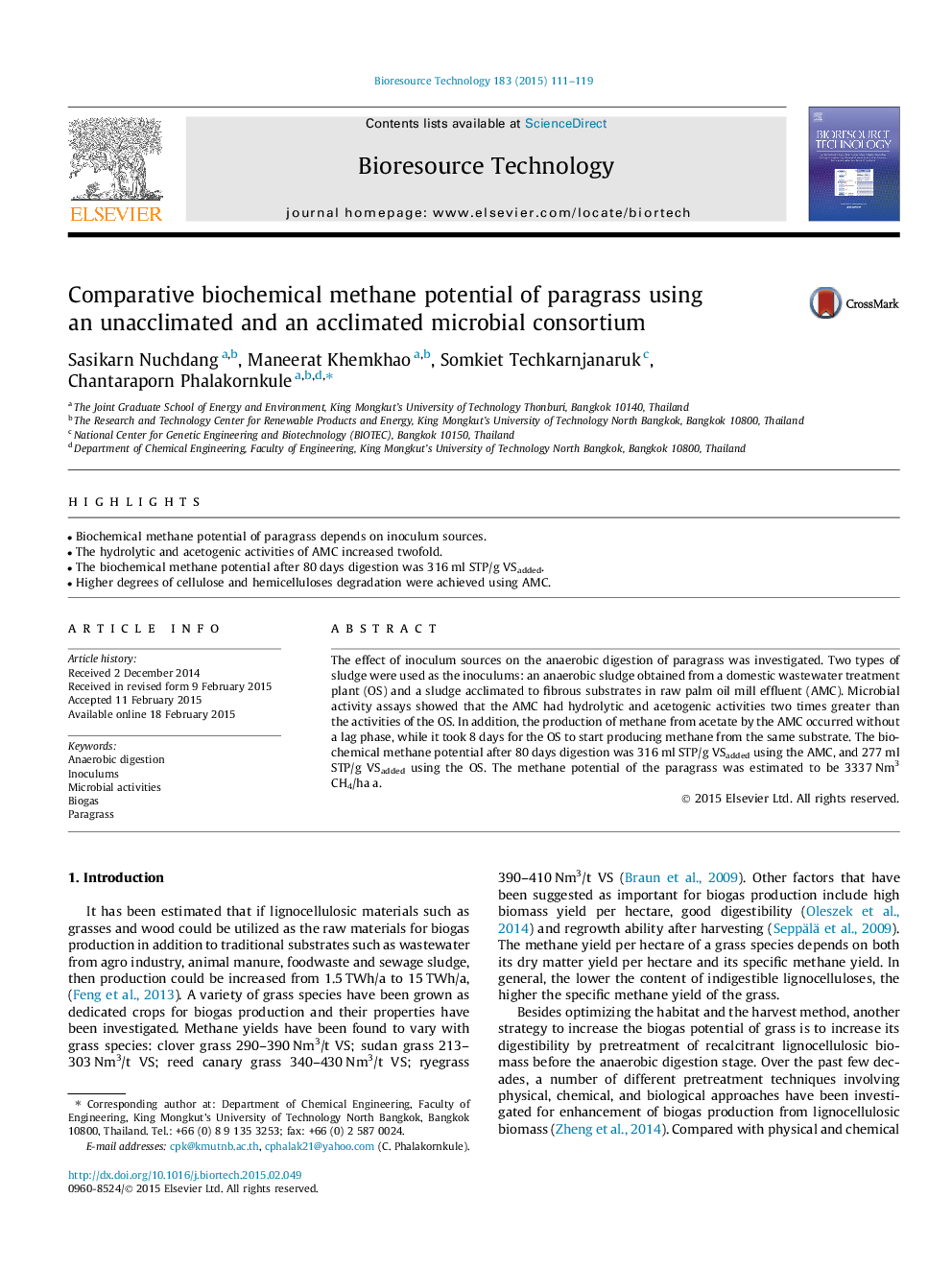| Article ID | Journal | Published Year | Pages | File Type |
|---|---|---|---|---|
| 679878 | Bioresource Technology | 2015 | 9 Pages |
•Biochemical methane potential of paragrass depends on inoculum sources.•The hydrolytic and acetogenic activities of AMC increased twofold.•The biochemical methane potential after 80 days digestion was 316 ml STP/g VSadded.•Higher degrees of cellulose and hemicelluloses degradation were achieved using AMC.
The effect of inoculum sources on the anaerobic digestion of paragrass was investigated. Two types of sludge were used as the inoculums: an anaerobic sludge obtained from a domestic wastewater treatment plant (OS) and a sludge acclimated to fibrous substrates in raw palm oil mill effluent (AMC). Microbial activity assays showed that the AMC had hydrolytic and acetogenic activities two times greater than the activities of the OS. In addition, the production of methane from acetate by the AMC occurred without a lag phase, while it took 8 days for the OS to start producing methane from the same substrate. The biochemical methane potential after 80 days digestion was 316 ml STP/g VSadded using the AMC, and 277 ml STP/g VSadded using the OS. The methane potential of the paragrass was estimated to be 3337 Nm3 CH4/ha a.
